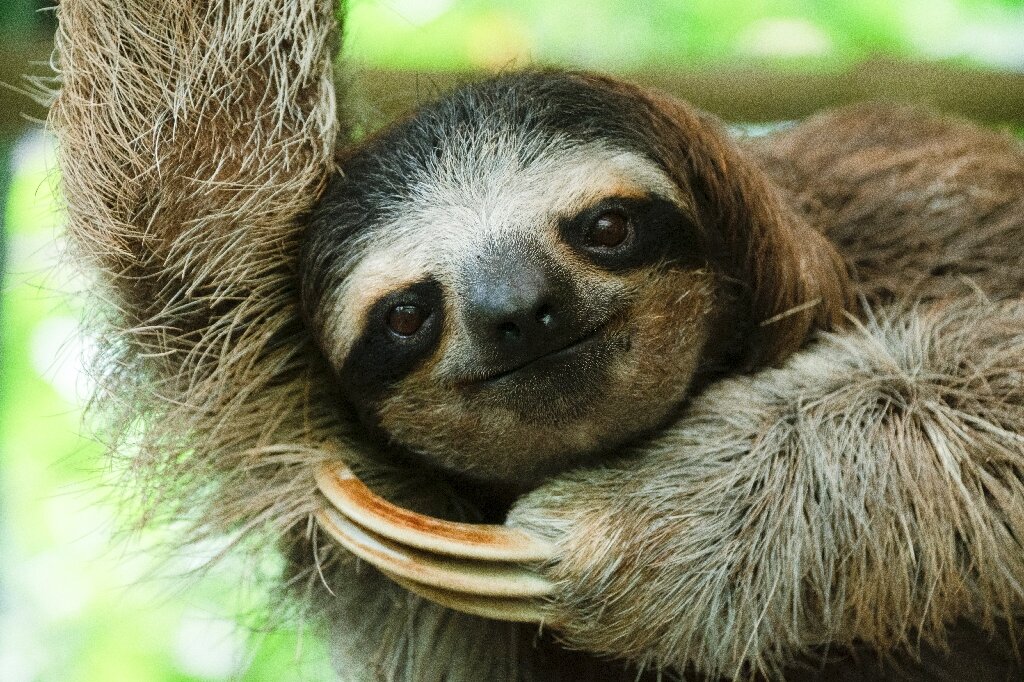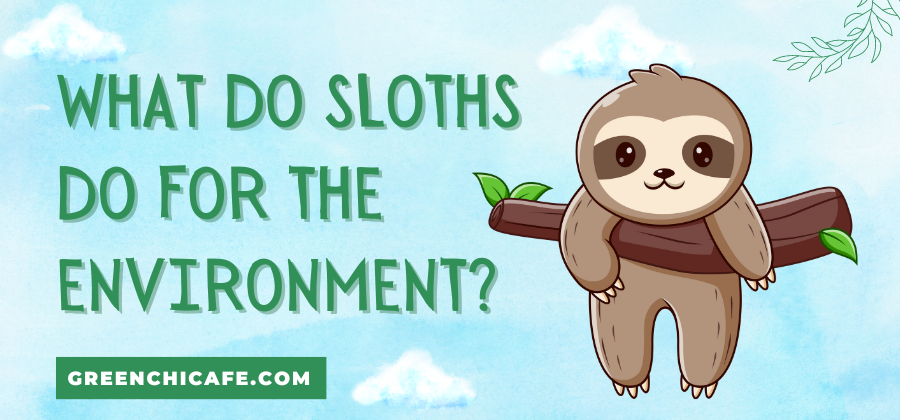Sloths play vital roles in forest ecosystems as arboreal herbivores that disperse seeds, enrich soils, and provide food for predators.
Their unique adaptations illustrate impressive symbiosis between species and habitats.
These peaceful, harmless animals move slowly through the canopy, quietly fulfilling ecological niches.
What Do Sloths Do for the Environment?

Sloths play vital ecological roles in tropical rainforests as herbivores that disperse seeds, enrich soils through waste deposits, provide essential food sources for predators, and exhibit fascinating symbiotic relationships.
They are considered keystone species and indicators of habitat stability.
Protecting sloths protects the interconnected balance of forest ecosystems.
Key Points
- Sloths disperse fruit seeds through digestion and deposit, facilitating plant growth.
- Sloth waste enriches tropical soils with vital nutrients like nitrogen and phosphorus.
- Sloths are key prey items that provide sustenance for jaguars, snakes, and birds.
How Do Sloths Disperse Seeds to Benefit Forests?
Sloths act as seed dispersers when they ingest fruit in treetops, then excrete the indigestible seeds on the forest floor.
This facilitates new growth and diversity in vegetation. Some species rely specifically on sloths to propagate.
What Predators Depend on Sloths As a Food Source?
Jaguars, snakes, and raptors like harpy eagles hunt sloths as a nutritious prey item.
Even anacondas feast on swimming sloths!
This energy transfer up food chains bolsters ecosystem stability through niche interdependence.
How Have Sloths Adapted to Arboreal Life?

Unique adaptions like slow metabolism, strong limbs, and specialized hands and feet allow sloths to thrive solely in trees from birth to death!
These traits equip them perfectly for their ecological role.
Do Sloths Contribute to Soil Nutrients?
Yes, sloth feces enrich tropical soils with nitrogen, phosphorus, potassium, and other nutrients.
This fertilizes vegetation through a natural, organic process benefiting the entire habitat.
Are Sloths Essential to Rainforest Ecosystems?
Research confirms sloths are keystone species.
Eliminating them causes detrimental ripple effects on seed dispersal, predator populations, and nutrient cycling that destabilize delicate rainforest ecology.
What Relationship Do Sloths Have With Algae?
Some sloths have a symbiotic relationship with green algae that tints their fur!
The algae gain shelter while producing nutrients sloths absorb through their skin.
This mutualism fascinates scientists.
Are Sloth Populations Threatened Presently?
Sadly yes, mainly due to habitat destruction.
Classified as vulnerable or endangered, ongoing conservation efforts strive to protect sloths for the benefit of all rainforest inhabitants.
Why Are Sloths Important to the Ecosystem?
Sloths play several irreplaceable roles in Central and South American tropical forest ecosystems.
As arboreal herbivores, they ingest fruits and disperse viable seeds through their feces, facilitating growth and diversity of vegetation.
Sloths also provide essential sustenance as prey species for big cats like jaguars, snakes, and raptors, allowing energy transfer up the food chain.
Sloth waste enriches soils with vital nutrients like nitrogen and phosphorus acquired through their herbivorous diets.
This fertilizes plants through a natural process.
Additionally, some sloth species host symbiotic algae in their fur which produces nutrients beneficial to the sloths.
Their specialized adaptations allow them to fill niches in the canopy.
Research shows that eliminating sloths destabilizes entire forest habitats.
For these reasons, sloths are considered keystone ecological species.
Protecting them ultimately protects interconnected biodiversity.
What Role Do Sloths Play in the Food Chain?
As arboreal herbivores, sloths occupy a key position near the bottom of tropical forest food webs.
Their primary role is providing sustenance as prey species for a diverse array of predators including big cats, snakes, and raptors.
These animals rely on sloths as a nutritious food source, allowing vital energy transfer up trophic levels.
Without sloths to feed on, predators like harpy eagles and jaguars would decline, causing ripple effects across habitats.
Sloths also facilitate the movement of energy by dispersing seeds from fruiting plants across the canopy.
Their unique digestive systems allow seeds to pass through intact to germinate in new locations.
This promotes diversity and density of producers at the bottom of the food web, which ultimately sustains wildlife across trophic levels.
Sloths exemplify the interconnected nature of forest ecology.
What Threats Do Sloths Face?
All six living sloth species face considerable threats primarily from habitat destruction due to human deforestation to clear up land to use for agriculture and development.
Most sloth species are classified as vulnerable or endangered presently.
Their arboreal lifestyles mean sloths cannot survive outside tropical rainforests.
Fragmentation of their canopy habitat also threatens their ability to reproduce and feed.
Climate change poses another future risk, as increasing droughts could decimate rainforest ecosystems relied on by sloths.
Conservation efforts focus on habitat preservation and connecting fragmented forests to allow sloth migration.
Promoting biodiversity helps remind us that intricate balances in nature underpin our own well-being.
More thoughtful stewardship of sloth habitats ensures the continuity of these fascinating creatures.
Key Takeaways:
- Peaceful sloths exemplify the interconnectedness and equilibrium of undisturbed natural habitats. Understanding their contributions offers insights into protecting fragile ecosystems.
FAQ
Why Are Sloths Important for Biodiversity?
As seed dispersers and prey, sloths facilitate reproduction and nutrient cycling that promotes speciation and abundance of life in rainforests.
What Threats Do Sloths Face?
Habitat destruction and fragmentation due to deforestation pose the greatest risk to vulnerable sloth populations. They cannot survive outside tropical forests.
How Many Species of Sloths Exist?
There are only six extant sloth species remaining in two genera – three-toed and two-toed. All are classified as threatened presently.
At GreenChiCafe, we are passionate about our amazing planet and protecting the natural world.
Check out our website for more content on sloths and rainforest ecology.
